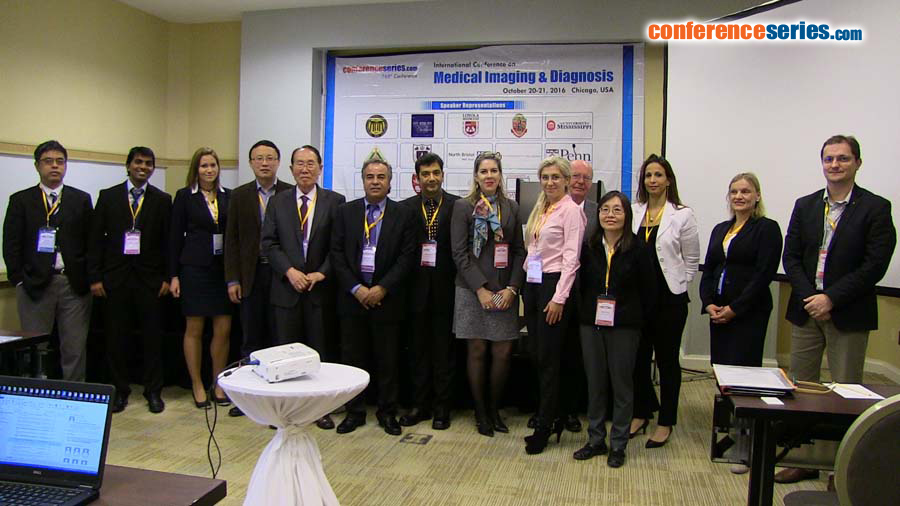
Monika Beresova
University of Debrecen, Hungary
Title: Differentiation between osteoblastic, osteolytic and healthy bone tissue in CT images by texture analysis
Biography
Biography: Monika Beresova
Abstract
Objectives: The aim of this study was to perform texture analysis of the bone metastasis, to find and describe the difference of heterogeneity parameters, in osteolytic osteoblastic, mixed (osteolytic and osteoblastic) and healthy bone lesions.
Methods: In this study, 5 patients with vertebral metastatic lesions were examined using CT images. Pathological lesions were manually segmented and binary masks were created for the all osteoblastic, osteolytic, mixed and healthy spine areas for each patient. Histogram (min, max, mean, SD, variance and SD/mean) and co-occurrence matrix (contrast, correlation, energy, entropy and homogeneity) features were extracted. For statistical comparisons, the segmented lesions were split into four groups according to their sizes: (1) 0-0.25cm3, (2) 0.25-0.5cm3, (3) 0.5-1 cm3 and (4) >1 cm3. ROC analysis and Kolmogorov-Smirnov test were done and we used non-parametric Kruskal-Wallis tests with Bonferroni correction to compare the different bone lesions.
Results: Based on reliability and ROC analysis, smallest ROIs (group 1) were discarded, and osteolytic lesions were also excluded from this study, because the sizes were falling into 0-0.25 cm3 range. The maximum, mean, SD, variance, SD/mean and contrast were significantly different between mixed and healthy lesions at ROI size larger than 0.25 cm3. At the same size range, the maximum, mean, SD, variance, contrast and correlation were significantly different between healthy and osteoblastic lesions. At last, comparing the mixed and the osteoblastic lesions, the maximum, mean, SD, variance and contrast parameters were found significantly different.
Conclusions: The heterogeneity parameters allowed us to describe the differences between pathological bone lesions. Texture analysis was not reliable in small lesions, but we could differentiate the healthy, the mixed and the osteoblastic areas utilizing the following textural parameters: maximum, mean, SD, variance and contrast.
Speaker Presentations
Speaker PPTs Click Here



